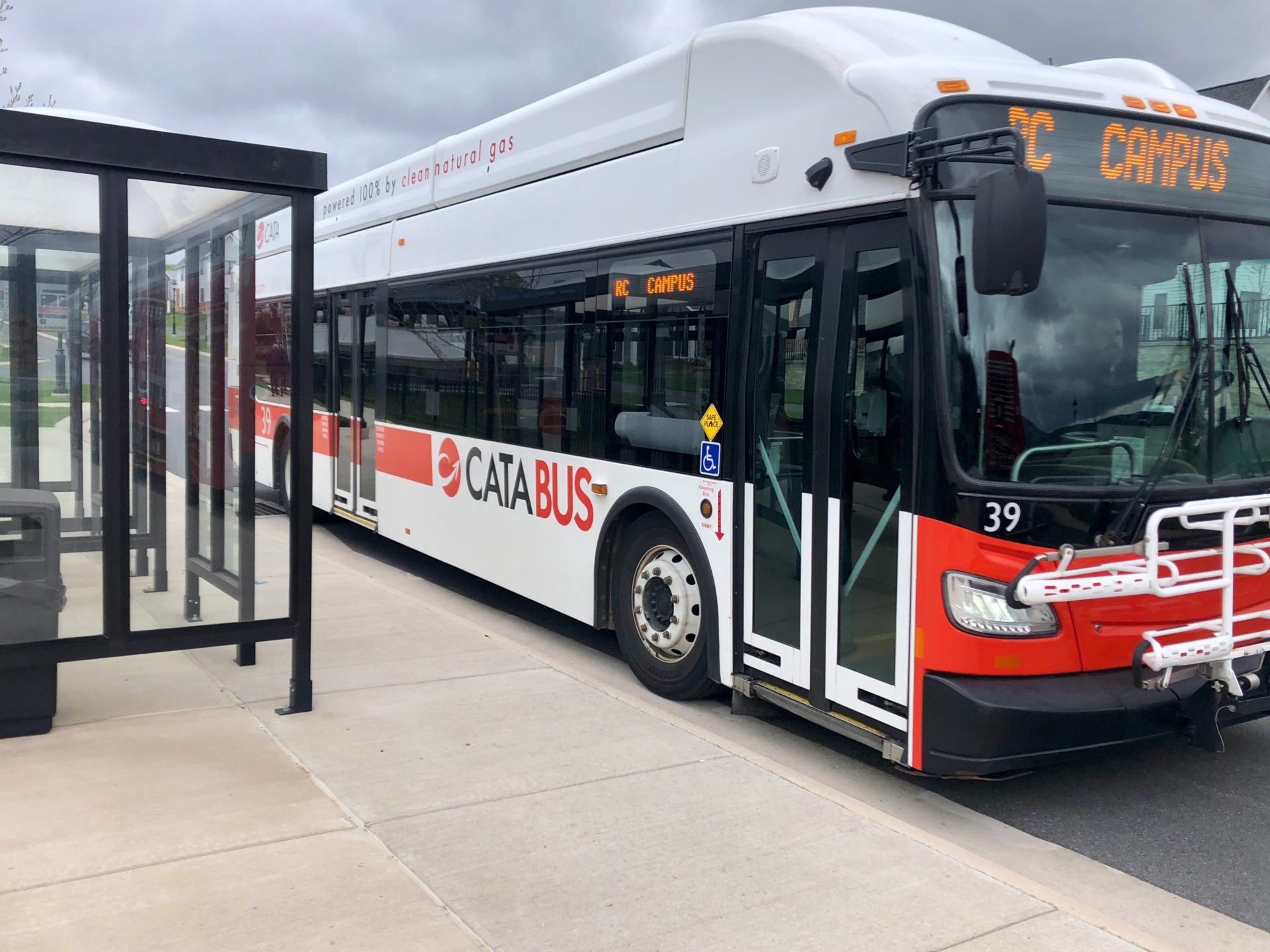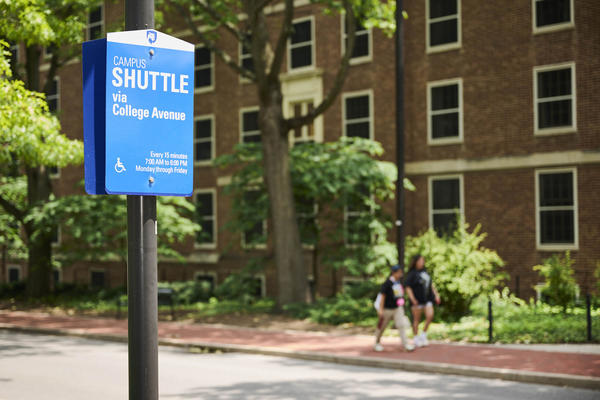In evaluating disability access at Penn State, I now want to consider how transportation at Penn State impacts individuals with disabilities. I first want to discuss the walkability of Penn State’s campus. While Penn State is generally regarded as a very large campus, it still remains walkable for the average person. Looking at the map below, the farthest walk on campus would be from the White Course Apartments in West to the Bryce Jordan Center, is a 39-minute, 1.8-mile walk. While I’m sure this is a very uncommon path, it goes to show that there isn’t really a place on campus that you couldn’t walk to. Looking more realistically at classroom buildings, the farthest walk between classes could be the IST Building and the Wagner building, which would be a 22-minute, 1-mile walk. Obviously not ideal, but doable for most of us.

However, when you factor in a wheelchair-bound or otherwise handicapped student, this 22-minute walk would seem impossible, requiring some kind of driving. Even for walks less than 15 minutes, consider other factors that could impact the walk. I’m sure you’re familiar with the many hills at Penn State’s campus. I know I don’t enjoy walking uphill for most of my classes, especially when it’s crowded, cold, snowy, and more. Accordingly, I couldn’t imagine the struggle that comes with navigating a wheelchair through crowds of students in the snow, even if it’s an electric wheelchair.

This all points to the need for alternative methods of transportation, such as cars, buses, and shuttles. Cars are immediately eliminated as an option, as most students don’t have access to a car for financial or family reasons. Moreover, this car would need to be handicap accessible, adding expense to a personal car. Additionally, this would make Ubers and Lyfts more expensive or unavailable entirely. Thus, I’ll now turn to University-provided buses and shuttles.

Centre Area Transportation Authority (CATA) buses, pictured above, are the largest source of University-provided transportation. With free “blue” and “white” loops on campus and other routes off campus, CATA buses are fairly accessible. In fact, Penn State’s website for Student Disability Resource writes that CATA buses are wheelchair accessible and can accommodate service dogs. However, I’d like to point out several issues with these buses, the first being the lack of available drivers, which has caused a shortage of buses. Have you ever checked the Penn State Go app to see that the next bus doesn’t come to your stop for 40 minutes? Or better yet, there are no buses running and it’s a rainy day. Once you wait far too long for a bus, you often have to reckon with extraordinarily crowded buses, which could make riding the bus in a wheelchair nearly impossible. Not to mention the extreme on-campus traffic that keeps the CATA buses running behind schedule, making them even more unpredictable, more crowded, and less efficient. Therefore, for most students, CATaAbuses aren’t much help compared to walking. One student, in an article for the Daily Collegian, said that the best part of her day was finally getting off of the CATA bus at her apartment. Of course, however, disabled students don’t really have the luxury of choosing to walk instead.

The third and final option that Penn State offers is a Campus shuttle, which the Penn State Office of Educational Equity calls, “two no-fare shuttle buses that provide more than 20 stops around the University Park campus. The shuttles are equipped with wheelchair lifts.” Pictured below, these shuttles run from 7 a.m. to 6 p.m., reaching 23 stops every 15 minutes. As you can see, the handicapped icon on the sign indicates that these shuttles are ADA-accessible. While I can’t find any reviews for this shuttle service, I imagine that since it’s more underground at Penn State, it has less users and is much more efficient. Therefore, this would be a much more viable option, considering that these shuttles are a little more geared toward disabled students.

Still, I would like to put out that the two of these transportation sources that are listed as “accommodations” for students with disabilities are offered to all students at Penn State. Is that really the best we can do for handicapped students? A flawed CATA bus system and a shuttle running through the edges of campus? It’s a shame that instead of coming up with specific accommodations for handicapped students, Student Disability Resources simply rebranded preexisting transportation at campus. It does say that Penn State’s Transportation Services can better coordinate these resources, but the link that they provide merely summarizes these resources, seen below. Thus, it’s easy to see that Penn State currently has no specialized transportation for disabled students. In my next Civic Issue Blog, I will be researching disability access at other universities (with an emphasis on transportation) to propose some ideas for how Penn State can make its campus more accessible. Additionally, I’ll seek personal accounts from disabled students at Penn State and other universities to emphasize this crisis and provide evidence for the necessity of transportation accommodations. In the meantime, the next time you’re struggling to get around campus from the CATA bus system or long walks, consider how wheelchair-bound students must feel, especially with the snowy weather we’ve been having.








This post is perfect! Great job using images and maps as well as breaking up your paragraphs so that they are easy to read! Amazing job and keep up the great work! 🙂